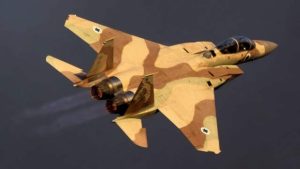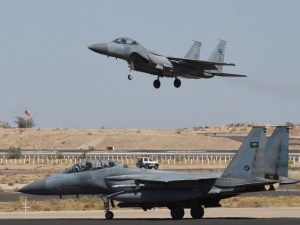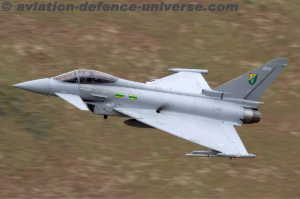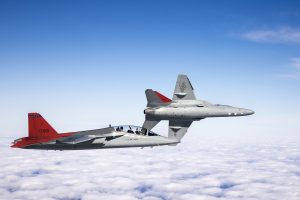
By Sangeeta Saxena
New Delhi. 23 October 2021. Surprise is not the element when it comes from Boeing’s fleet of existing fighters or the ones in the making. Reliability, stealth, survivability and state-of-the-art technology have always made the brand Boeing a front runner in the world of fighters. And currently in discussion is the F-15EX Eagle II.
It was on July 13th 2020 when the world was heavily under the COVID 19 pandemic and the initial lockdowns had just got over that the U.S. Air Force announced an approximately USD 1.2 billion contract to build the first lot of eight F-15EX advanced fighter jets and twelve more jets were requested for FY2021. And the person who was the cynosure of all eyes, Prat Kumar, Vice President and Program Manager Boeing F-15 Programs, now has a lot more to talk about when the count down to Dubai Air Show 2021 has begun.

Speaking to the media at a virtual press conference in a run up to the Dubai Airshow 2021, he reiterated that while from the outer it may look like the previous F-15s , this latest avatar F-15EX has a brand new high speed computer which allows us to insert new technologies as they evolve without having to worry about regression testing for safety flight elements. The most significant difference between the F-15EX and legacy F-15s lies in its Open Mission Systems (OMS) architecture. The OMS architecture will enable the rapid insertion of the latest aircraft technologies. The F-15EX will also have fly-by-wire flight controls, a new electronic warfare system, advanced cockpit systems, and the latest mission systems and software capabilities available for legacy F-15s.
Elaborating on the key features of the Eagle II he continues that the fully integrated electronic warfare suite and an AESA Radar give it increased survivability and 12 air- to-air along with 15 air-to-ground stations give the fighter an enhanced lethality. There is also a BAE Systems’ AN/ALQ-250 Eagle Passive Active Warning Survivability System for electronic warfare, among other capabilities. The plane’s large weapons payload capacity, including the ability to carry hypersonic missiles up to 22 feet long and weighing more than 7,000 pounds, is being projected as it’s major achievement. The jet will be able to fly at Mach 2 at altitudes over 50,000 feet.
This jet also has very high speed, fibreoptic backbone connecting all the sensors and computing power on the jet that allows us to provide unmatched situational awareness to the war fighter in the cockpit. Fly by wire flight control systems give it enhanced aerodynamics. Its advanced mission systems have Advance Display Core Processor II and Operational Flight Programme Suite 9.1X. And in addition it has a digital airframe and an advanced cockpit system, he added. And just when he was addressing the media, the F-15EX was undergoing its first-ever operational test mission paired with F-15Cs and F-15Es at Nellis Air Force Base from Oct. 18-25.
There are currently two F-15EXes in existence. The Air Force accepted delivery of them at Eglin Air Force Base, Florida, in March and April 2021. The platform is anticipated to join the F-35, F-16 and A-10 along with a sixth-generation fighter program as part of the four-plus-one concept intended to streamline the fleet.
The F-15EX will replace the oldest F-15C/Ds in the service’s inventory. Eight F-15EX aircraft were approved in the fiscal year 2020 budget and 12 were requested in the FY21 budget. The Air Force plans to purchase a total of 76 F-15EX aircraft over the five-year Future Years Defense Program. In July 2020, the Air Force awarded Boeing an Indefinite Delivery, Indefinite Quantity contract for up to 200 F-15EXs. The service has announced initial basing locations in Florida and Oregon. The F-15EX is the most advanced version of the F-15 Eagle twin-engine. It is an all-weather, tactical fighter and has the ability to perform a variety of roles like air superiority, interceptor, strategic bombing, ground attack, and deep penetration strikes. The aircraft will be the first Air Force aircraft to be tested and fielded from beginning to end through combined developmental and operational tests. The 40th Flight Test Squadron and the 85th Test and Evaluation Squadron personnel are responsible for testing the aircraft.
It may be recalled that Boeing has received a licence from the US government to offer its F-15EX fighter jet to the Indian Air Force. Prat Kumar in an earlier chat with the media had said, “India is there for a large 114-jet acquisition programme. We are waiting for the ASQRs (Air Staff Qualitative Requirements), the requirements’ definitions, because right now, until we have that, we do not know if this jet is in the sweet spot or not.”
Lockheed’s F-21, Boeing’s F/A-18, Dassault Aviation’s Rafale, Russian MiG 35 and Saab’s Gripen are the other fighter jets that are in the fray for this deal. Will Boeing offer two of it’s aircraft remains to be seen? Logic says one of them will have to bow out of the competition. Prat also had informed that the government-to-government exchange is answering the questions around F-15 (EX) so that they (IAF) can have basic capability requirements which they can factor into their ASQR definition. So for India it will be wait and watch.

For the Middle East which will be the cynosure of all eyes next month Qatar is the latest to be all set acquire F-15 in its configuration called F-15QA. The first set of F-15QA Ababil jets will ferry to Qatar later this year following the completion of pre-delivery pilot training. Boeing, in collaboration with the US Air Force (USAF) and Qatar Emiri Air Force (QEAF), celebrated the naming and rollout of Qatar’s advanced F-15, the F-15QA Ababil.
“The Qatar F-15QA program further enhanced next-generation technologies in the advanced F-15 such as the fly-by-wire flight controls, an all-glass digital cockpit and contemporary sensors, radar and electronic warfare capabilities,” said Prat Kumar in an official statement. “Driven by digital engineering and advanced manufacturing, these aircraft represent a transformational leap for the F-15. The F-15QA will enhance the superiority of the QEAF with more speed, range and payload than any fighter in the world,” he added.
Boeing has been providing maintenance and logistics support for the QEAF during pre-delivery pilot training, which began earlier this year. In addition, Boeing will establish and operate an aircrew and maintenance training center for the QEAF at Al Udeid Air Base in Qatar through 2024 while also providing in-country spares and logistics support once aircraft are delivered.
In the region Israeli Air Force has been flying F-15 for decades. The first F-15I arrived in Israel in 1997, with new aircraft arriving at about once a month until the order was fulfilled in 1999. The aircraft served continuously over the past twenty years, not only in training exercises but anti-terrorism operations, the 2006 Lebanon War, the Gaza War, Operation Pillar of Defense, and Operation Cast Lead. The F-15Is were also heavily involved in Israeli planning to strike Iranian nuclear facilities had Iran, a strike headed off by the signing of the 2015 nuclear agreement between Iran and the West.

And no report on F-15s in Middle East can be complete without mentioning Saudi Arabia one of the closest allies of the United States in the Middle East. Total strength of 207 combat F-15s both F-15C Eagle and F-15S/SA variants of F-15E Strike Eagle together make the Royal Saudi Air Force formidable. And also there are 21 F-15 D conversion trainers.
But the Boeing F-15EX still has a huge untapped market in the Middle East. Of the 16 countries only 3 have F-15s in their inventories. This gives Boeing a great opportunity to expand its fighter business in the region. And what better than Dubai Air Show to reiterate the idea and showcase the aircraft.



























































































































